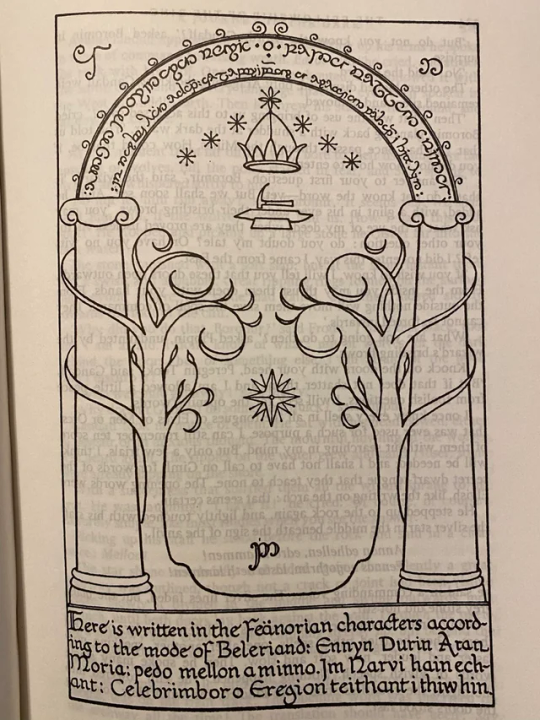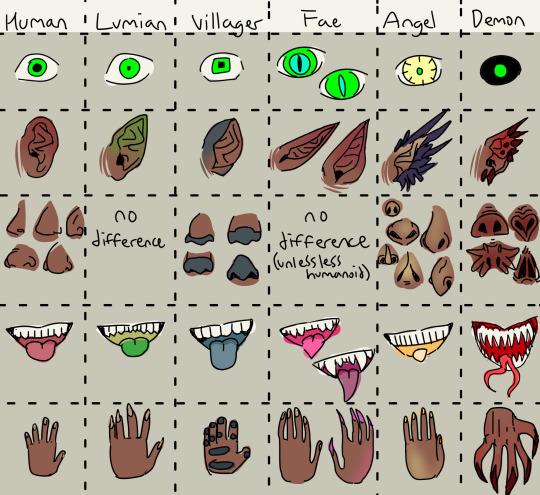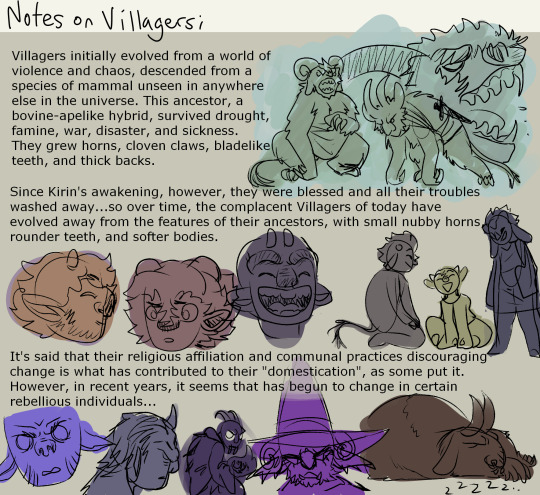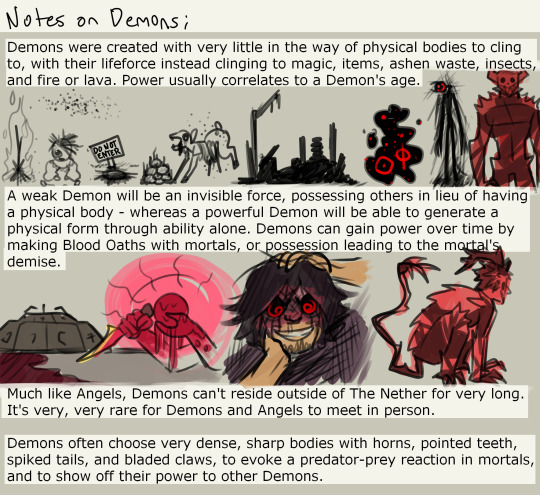#novial
Explore tagged Tumblr posts
Text
Surely THIS time the new international auxiliary language will resonate with the masses and be adopted worldwide, not like the last one
#esperanto#interlingua#Interlingue#Ido#volapük#occidental#novial#Kotava#Lingua franca#lingua Franca nova#Slovio#Interslavic#Pandunia#Lingwa de planeta#Globasa#Folkspraak
20 notes
·
View notes
Text
@/xaytheloser for the designs of Scorched Butter, Crystal Web, and Lonely Water. I hope they don’t mind!
@/desperatelittledemon for Soft Egg’s and Tar Brew’s! Hope this isn’t a cause for issue!

Scorched Butter Cookie: “Please, get behind me, Y/N Cookie. You must not taint your dough further from the evil. Your…friends do not have your interests at heart…”

Lonely Water Cookie: “Y-you’re leaving me?! After every second that we spent together?! I cannot go back to being alone again?! If you won’t stay, I’LL MAKE YOU!”

Tar Brew Cookie: “Now, you are a bonafide specimen, Y/N Cookie~ Normally, I’m pretty careless when it comes to experimenting and testing my subjects, but you? Oh you~ I’m going to savor just what lies under your dough~”

Crystal Web Cookie: “Ah, much better without those nuisances around to bother us. I make much better company then Gingerdull and his friends, don’t I? Please, won’t you stay with me? Forever~? Hehehehe~”

Soft Egg Cookie: “I’ve got to hand it to you, Cookie. You’re surprised me way more than I like to admit! I wasn’t expecting you to give me a run for my Soul Jam! Why don’t you and I get out of here and leave your friends in the dust?”
As if the previous Beast Cookies weren’t bad enough!
#cookie run x reader#cookie run x you#cr x reader#crk x reader#cookie run kingdom x reader#the novial beasts#crystal web cookie#tar brew cookie#soft egg cookie#scorched butter cookie#lonely water cookie#cookie oc#oc cookie
193 notes
·
View notes
Text
youtube
Ricardo Lezón - “Noche en Noviales”
0 notes
Note
I have a question about your categorisation of conlangs mentioned in the Novial episode. you explain that for your purposes, a global IAL "is a specific type of auxlang, which is a specific type of interlang, which is a specific type of conlang"
so, the non-interlang types of conlang are obviously engelangs and artlangs, and the non-global-IAL subset of auxlangs are presumably the 'regional' ones like Folkspraak and Interslavic. But what is the non-auxlang subset of interlangs ?

made a diagramme to help me visualise it, but I still can't think of an example. this is a genuine question btw not trying to "gotcha" you or anything
as a general rule of thumb whenever I say something that doesn't make sense in a conlang critic video it's usually just me being wrong because those videos never got second drafts
82 notes
·
View notes
Text
Qunlat 1/??: Introduction
⭅ Previous =⦾ Index ⦾= Next ⭆
First dive into canon Qunlat! I’ll be starting with a bit of history and background on constructed language creation, what I think the strengths and weaknesses of Qunlat are, and how they likely came about.
Note: This post and all others in the series will contain image alt-text that includes optional side-material. It's not necessary to read to understand the main text, but it does contain spicy details like "How old is Sten?" and "who could the Witch-King of Angmar have been defeated by, if the prophecy about him had been written in Qunlat?"

People have always been making new languages–ever come up with a secret code between friends, siblings, or partners? Congratulations! You’ve dabbled in making a new language.
Constructed language creation goes back many centuries–usually for religious use, such as Hildegard von Bingen’s mystical use of her Lingua Ignota. In the 18th and 19th century, an interest in language reform and international communication created attempts at more “logical” and “universal” languages like Esperanto, Volapük, Ido, and Novial. Constructing new writing systems also has a long and successful history–Hangul is used by 81 million people! The Cherokee syllabary, wholly created by the singularly dedicated Sequoyah, is still in use today!
But for our purposes, the story starts with a fellow named Tolkien.

As a historian, linguist, and big ol’ nerd who wanted to write a mythological epic, Tolkien famously built the elven languages of Middle Earth first, and then folded the rest of the world around them. He also produced limited amounts of Khuzdul (dwarvish), Adûnaic, Rohirric, Entish, and the Black Speech, creating a rich and alive-seeming world in the process.
Ever since him, big ol’ nerds have been influenced by this. Most constructed languages since have flourished in the hobbyist space of “conlangers”, folks like me who do this for fun. And oh boy, is it fun. Here’s a sample of an original language I’ve created:

But the most well-known conlangs sit at the intersection of art and commerce: languages constructed for mass media. These have a unique set of constraints, which will explain a few things about Qunlat. Yes, I promise, I haven’t forgot about Qunlat. I’m just excited to talk about my hobby.
When Star Trek made the jump to the big screen, James Doohan threw together some words that linguist Mark Okrand eventually transformed into the Klingon language. Doohan wasn’t really focused on making a usable language, he just wanted something that sounded right–it had “phonaesthetics” that matched the audience perception of the Klingons. This created something unfamiliar to English speakers, requiring you to make guttural sounds that most dialects of English never touch. Phonaesthetics were also among Tolkien’s leading principles with his languages–Quenya was influenced by the sounds of Latin and Finnish, Rohirric by Old English, and the Black Speech by the extinct Hurrian language. To him, these had certain associations that informed the character of the language’s speakers.

Phonaesthetics are usually priority number one in constructed languages that appear in mass media. While many modern projects will hire professional linguists to create something robust and to instruct actors on how to speak their lines, this isn’t always the case. In fact, it’s a very recent development.
Mostly, constructed languages have been the province of some jobbo in the writer’s room or sound department, who has fifteen other things they have to be doing. They create something they think sounds good, and then send it off in the script. When the conlang is plonked down in front of an actor, they may not be given any direction on pronunciation, because nobody in the room has been given a pronunciation guide.

All this is to say: Many constructed languages in media are produced very quickly, they’re poorly-documented, and they’re often performed by people who haven’t been coached on their use. Those that survive are often passed through multiple hands, which may lead to refinement of the language, or artistic direction may be lost.
Qunlat has a lot of the hallmarks of this sort of language. So does Elvhen, but I’m only passingly familiar with it. Qunlat, though. It has a very simple, very Indo-European language structure, which primarily functions in ways English considers “default”.
This is very common when an English-speaker makes a constructed language without a lot of practice: you write what you know, after all. And because most people never have to think too hard about their native language, they recapitulate the bits they think are vital, shave off a lot of the complexities that they don’t want to deal with, and never replace them with anything else. If a complex sentence does rear its head, something is slapped together ad-hoc. There are specific examples I can point to throughout the series that fit these patterns.
The phonaesthetics of Qunlat also have the hallmarks of a project that’s passed through many hands, or been poorly documented. While it began with a fairly strong sense of phonaesthetics, some additions are notable for their dissonance with the rest of the language. It's on a journey without a road to follow.

So while I focus on canon Qunlat, I’ll also be trying to point out the things I like, and the rough edges that make things difficult or uncertain, while attempting to take an understanding view of it all–Heck knows, I’ve made some real clunkers in my time as a conlanger, and I didn’t have to publish any of it on a deadline.
We start with a discussion on how I’ll be handling sources next time, as Dragon Age is… well, it’s complicated.
⭅ Previous =⦾ Index ⦾= Next ⭆

14 notes
·
View notes
Text


Flag Wars Bonus Round
9 notes
·
View notes
Text
Volapük, Esperanto, Ido, Novial, &c, &c, are dead, far deader than ancient unused languages, because their authors never invented any Esperanto legends.
J. R. R. Tolkien, Letters #180 to ‘Mr Thompson’ (draft), 14 January 1956
17 notes
·
View notes
Text
Nomes dos integrantes do EXO se eles fossem brasileiros (P/1)🇧🇷
*Utilizando as fontes da minha cabeça e da minha análise da aparência + personalidade de cada membro*

KIM JONGIN- Começando com o integrante mais fácil de transformar em brasileiro, já que é quase consenso no fandom q seu nome br seria JORGE. É a transformação mais lógica para o nome jongin e combina muito com ele. É um nome de galã de novela das 21:00 e se se encaixa muito com a personalidade de príncipe encantado que ele tem.
Também levei em consideração o stage name Kai, afinal, todos sabemos q jongin é a pessoa e Kai é a persona e cheguei a conclusão que a melhor "tradução" para Kai seria KAÍQUE. Sim, kaíque e não "caio" pq acho q Kaíque tem toda a malandragem e a sagacidade q só o kai tem. Além de seguir bem na linha de contraste de personalidade que existe no nosso príncipe da dualidade Kim Jorginho.

BYUN BAEKHYUN- O nosso menino baek foi o segundo mais fácil de nomear pq a combinação rosto angelical + extroversão + travessura na minha cabeça é sempre igual a: GABRIEL .
A carinha de santo sempre engana, mas quando você vê de perto descobre que é uma peste. Provavelmente foi uma criança bem travessa durante a infância e na adolescência era bem popular com as meninas. Sabe quando você vê sua amiga toda apaixonada e descobre que ela tá assim por um Gabriel e não há nada q você possa fazer porque isso é um evento canônico na vida de toda a menina? Então, é essa a energia que ele me passa.
Outro nome q considerei pensando mais em seu nome coreano foi BERNARDO. Esse não tem muita explicação só acho q encaixaria bem com ele.

KIM MINSEOK- Para o nosso querido velhinho, a decisão também não foi muito difícil. Apesar da idade, a essência dele é de uma pessoa bem nova.
Ele sempre me passou aquela impressão de pessoa que foi criada com a vó, sabe? Vida mansa, sempre sendo paparicado, sem medo de fazer alguma graça para ganhar o que quer. Para ele escolhi o nome FELIPE.
É novial e tem aquele toque de criança classe média alta que vive em condomínio sem ser muito cafona ou estereotipado.
5 notes
·
View notes
Text

So I was looking my BBS and thinking about expanded themes to include some language support for non English users. I can't say I'm great at anything but English myself but I remembered my Esperanto days and promptly looked into it. Sadly the same problems that plagued Esperanto over a hundred years ago still do starting with needing non standard characters or a way to stand in for them.
I remembered Ido, well and Novial as well and went back to see what made the children of Esperanto "improved." For starters, and I didn't get past Ido, It uses the "standard" keyboard characters. So the base latin set will cover all your bases with no need for stand-in. It also dropped number agreement with adjectives. So - the blue dog isn't the blues dogs in Ido. or La blua hundo to plural is la blua hundoi. Oh yeah, they don't use j to make plural but an i. So, little changes from it's Esperanto roots and this too is nice as it keeps the language somewhat mutually intelligible. An Esperantist and an Idist should be able to follow each other with minimal effort. Ido is gender neutral as well if that's a concern something I've seen Esperanto tarred for.
Now the down side. When Esperanto schemed and Ido was born it took many of the power users but the base users of Esperanto stayed loyal to the original. This means that in our age there are just orders of magnitude more Esperantists than Ido users though that number seems to be improving.
The thing with Auxiliary conlang people seems to be wild infighting in the hunt for the "perfect." I'm all for innovation where it makes sense but this is like charging a battery to 100% when 80% would cover most all of your needs. There's so much pedantic petty nonsense in this community of language users that it's idiotic. Sort of like Leftist politics, 80% of them would have some irredeemable issue with the messiah, may he come swiftly and soon.
For the BBS it's going to be Ido, it does work better than Esperanto in a functional way, it's just as easy to learn, and it's close enough to be of usefulness just after learning a natural language. I still think it would be a fun grade-school 2nd language that you graduate out of. Something 4-6th graders might get some light exposure to then fall into a natural language for 7-12th grade. And as most people read it rather than speak it it's perfect for the BBS scene.
From Wikipedia
Ido (/ˈiːdoʊ/) is a constructed language derived from Reformed Esperanto, and similarly designed with the goal of being a universal second language for people of diverse backgrounds. To function as an effective international auxiliary language, Ido was specifically designed to be grammatically, orthographically, and lexicographically regular (and, above all, easy to learn and use). It is the most successful of the many Esperanto derivatives, called Esperantidoj.
1 note
·
View note
Text
@EscuelaparaImpresores
Escuela para Impresores es una plataforma digital especialmente diseñada para los profesionales en esta área, donde se dictan cursos en diferentes modalidades para las compañías que se desarrollan en este mercado. ¿Qué aconsejas hacer a los impresores? David Gonzalez Novials Luis Heras Aurelio Mendiguchía García Julio Pérez Martí #masfacturacionporcliente #ventas #tecnología #futuro .To know More Click : https://www.escuelaparaimpresores.com/ #EscuelaparaImpresores @EscuelaparaImpresores

..
0 notes
Text
DPRD : Dirgahayu Kabupaten Lampung Barat Ke 32

DPRD Lampung Barat Mengucapkan : Dirgahayu Kabupaten Lampung Barat Ke 32. "Lampung Barat Bersatu Untuk Terus Melaju". Edi Novial, S. Kom Ketua, Sutikno, S. Ap WK I, Erwansyah, SH, WK II Read the full article
0 notes
Photo
impulsively giving scientific names to my minecraft fanlore races rn
have another readmore >v>
EDIT: ALSO adding some language info
the Science Paths are pretty much the same, with a key difference being - to differentiate the different planetary lineages - they have planet markers in their etymology to delineate their respective origin of evolution (thus we're able to gloss over the fact that lumians are just hyperevolved demigod earth humans) (also quick note, these are written from the perspective of earth humans, since we're the ones making this guide to begin with lol)
Humans: ter-homo sapien (we named ourselves "smartypants apes") Lumians: lux-homo caelesta (same latin root as "celestial") Villagers: lar-homo smalikr (from old norse líkr, meaning "similar to", and smali, neutral form of "sheep") Fae: ark-homo eidolon (from ancient greek "eídōlon" meaning "false god")
and these two wouldnt have one but i wanted to make them because i said so (the 'sim-' is for 'simulacrum', because they aren't exactly mortal creatures and their physical form is either not inherently given to them or is dubious at best) Angels: anu-homosim nurabzu (from Sumerian "nuru" meaning "light" and "abzu" meaning "primeval source") Demons: ush-homosim dalkhu (from Sumerian "dalkhu" meaning "demons")
also here's the "oldworld" names for the planets, as further reference, which can be used interchangeably with the "modern" names;
Earth = Terra (obvious but jic u didnt know...means earth) Lumina = Luxata (from lux, meaning "light", and luxate, meaning "dislocated", referencing their sheer distance from our solar system as humanoids) Craftia = Lares (named for the Roman god of family and the home) Twilight = Arkhios (from Ancient Greek, arkhaîos, meaning “from the beginning, antiquated, ancient, old” - same as archaic/archaeology)
...and of course, still wouldn't have one, but i want to make them so; Aether = Anunnaki (Sumerian for "Heaven") Nether = Usherim (from Sumerian "úš" meaning "blood; blood vessel; death", and "érim" meaning "enemy; destruction" or "hostile; evil")
---
FOR LANGUAGE...
Humans use so many that im not listing them!
-
Lumians use many International Auxiliary constructed languages (conlangs that are created with the intention to unite Earth's people) such as; Volapük (and its derivatives; Spokil, Il de Api, ) - Esperanto (and its derivatives; Plusperanto, Esperandu, Ido, Antido, Adjuvilo, Neo, Mundolinco, Romániço, Sen Fleksio, Poliespo, Universal, and Esperant') - Universalglot, Ro, Novial, Intal, Interlingua, Interlingue, Interglossa / Glosa, Kotava, Lojban, Bolak, Sona, Mondial, Frater, Babm, Mirad, Sambahsa-Mundialect, and Lingwa de planeta.
Also I feel like not including Kēlen and Lincos would be a crime.
I made a writing system for their language(s) previously, but since I'm dropping the desire to construct a whole conlang for them, I'll be relying on these IALs and may later make up a new alphabet, or set of alphabets >v<;; I'm particularly interested in reforming or readapting similar intentions displayed by aUI (because its giving me little red n*zi flags) for a new alphabet.
-
Villagers speak a variety of dialects in Toki Pona (x) (which i just learned you can play minecraft in!?!?) - it's a conlang that's considered the world's smallest language, stressing the importance of brevity with only 130ish words. Villager's Toki Pona has different dialects depending on their biome, and specific villages and regions will have personalized twists to speaking. Illagers speak with a crooked accent, often bastardizing the language by slurring speech.
And of course, they all use the Standard Galactic alphabet!
-
The Fae, in addition to most human languages, also speak a variety of languages that mostly rely on the speaker's species, as that usually denotes their cultural upbringing, but if a fae is raised outside of their species' culture (for example, if a mermaid was raised by dragons) they would only know the language they were raised with. There are some common languages, which vary by region, and exclusive languages, which are used by sects and members of certain status (like Royal Fae).
Conlangs I'm including as common languages are; Solresol, Sprache, Eurolengo, Uropi, Europanto, Unish, Ellefen, other Zonal auxlangs, Láadan, Viossa, Kobaïan, Moss, and Wenedyk Conlangs I'll use as subsectional are Esperantom, Balaibalan, Loglan/Lojban, Ithkuil, Loxian, and Brithenig
I think it'd be fitting for the Fae to utilize the Lingua Ignota alphabet, with its initial glossary also being commonplace in every Twilight language.
-
And finally, grouping them together because it's easier, Angels use Enochian (which i would like to edit the visual appeal of) and Demons ironically enough use Utopian (which i think would be cool to update utilizing other alchemical symbols).
I liked the idea of an ancient angelic language, and the alchemical/angular/perfect shapes of the Utopian conlang work very well with my lore for Demons because of their reliance on sigils and alchemy for power. Aside from me tweaking things, it pretty much just easily falls into place for me.
-
ok NOW thats all fkgjkgkl - I'd like to make unique language signifiers (to substitute the real-life names) because that kinda thing would just be a lil cool to have..........








WOOHOO!! It’s all done!! A race guide for my Yogscraft fanlore stuff!!
ALT Text/Transcription Below Cut;
Keep reading
#yogscast#minecraft#headcanons#minecraft villager#lumians#twilight forest#worldbuilding#mc#mcrp#mc demons#mc angels
221 notes
·
View notes
Note
FINALLY DID IT!!
Scorched Butter Cookie! (or I personally call them Scorched Cream Cookie :3)


once the holder of the light of Temperance, now the Sin of Vice! personally I think I popped off with them ngl-
I took inspiration from the Avatar of Destiny, and tried to mix it with a seraphim angel (they are also known as "the burning ones" in the bible, I thought it fit :3)
next are Tar Brew and Soft egg!
Having a ton of power as a Virtue means to have control over that power that doesn’t spill over into excess.
But where does control end and the morally wrong begin? So long as you acknowledge that you’re always in control, everything is under control…
#brittle answers#cookie run#cookie run kingdom#the novial beasts#scorched butter cookie#scorched cream cookie
80 notes
·
View notes
Video
youtube
Novial
25 notes
·
View notes
Video
youtube
Ricardo Lezón - “Noche en Noviales”
source: elardor
1 note
·
View note
Photo
Truly an incredible artifact. Novial basically disappeared when Jespersen died in the 1940s, and only reappeared thanks to the internet, and sites like this.
Meanwhile the "visit these great news sites" banner consists exclusively of sites run by individuals too far right to participate in electoral politics in any NATO member or ally.

original url http://www.geocities.com/Athens/Forum/5037/
last modified 2007-11-10 14:48:06
10 notes
·
View notes